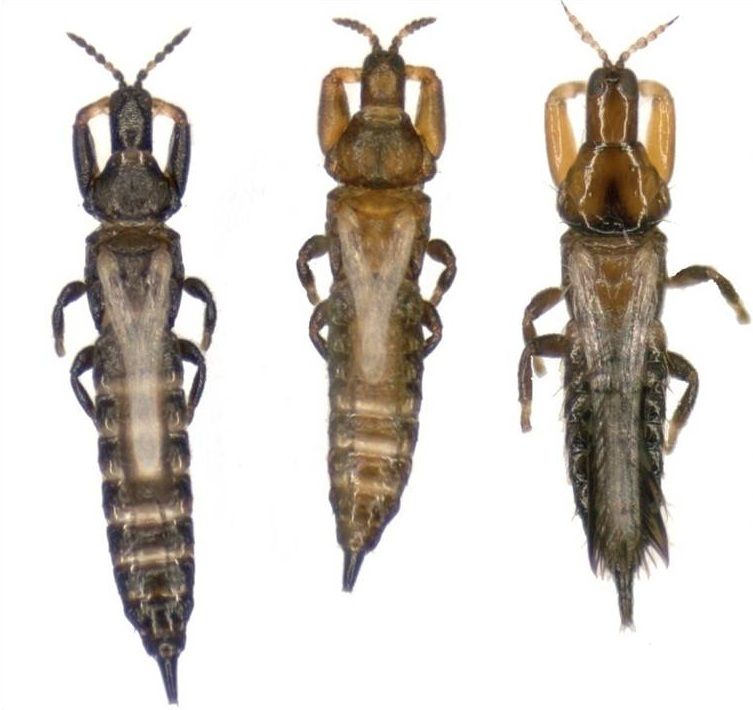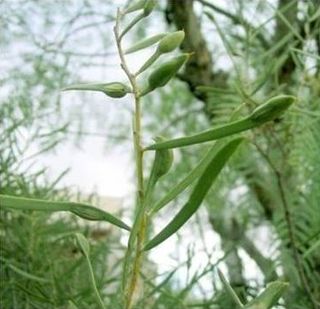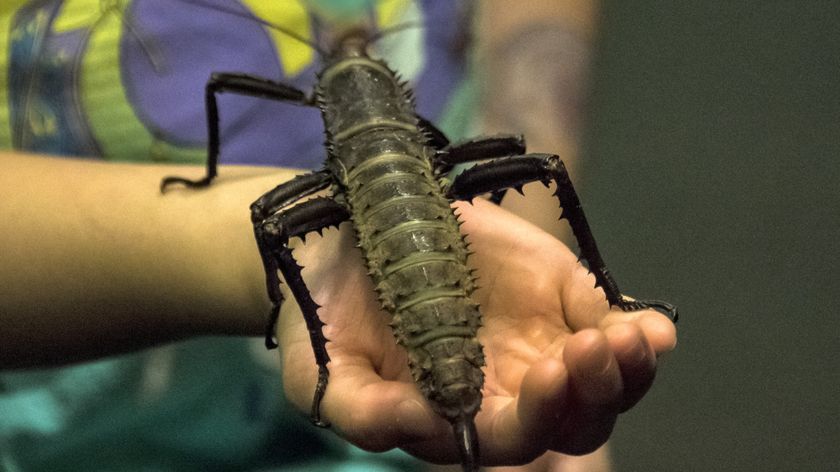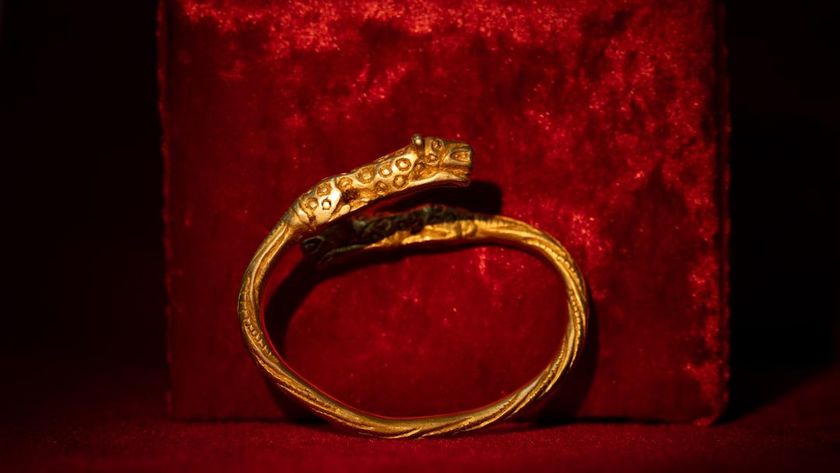Soldier Bugs Protect Colony From Threats Large and Small

The insects often called thunderbugs include soldiers that use their lengthy "arms" to squeeze the life out of invading rivals. New research suggests these soldiers also defend against much tinier invaders: They produce a compound that kills off some microbes.
"In a lot of other insect species as well, the soldiers are actually the ones who protect against those macroscopic and microscopic species," said Holly Caravan, of Memorial University of Newfoundland, Canada, who studied the thunderbugs, the tiny flying insects also known as thrips.
Caravan and her colleagues focused on a species, Kladothrips intermedius, reaching just 0.08 inches (2 millimeters) long, that build their homes inside of plants in southern Australia. Each colony lives in a a gall, a generic name for a bulbous growth on a plant, set up by a single thrips.
This colony creator gives rise to two "castes" of offspring: those that go out and create their own gall (they are called dispersers) and those that defend the existing gall (known as soldiers). The soldier thrips are very different in shape than the dispersers, having much smaller wings since they don't need to fly far. They also have extra-long arms to squeeze the life out of invaders trying to make their way into the gall.

"They use these enlarged forelimbs, and they grasp the invading thrips and squeeze them repeatedly," Caravan said. The invading insects subject to this death squeeze are in the genus Koptothrips; instead of building their own galls, Koptothrips individuals take over the galls of other thrips.
The researchers collected, gall-building K. intermedius thrips (109 females and 108 males) and had them battle the invaders to the death in test tubes in the lab. It seems the males are just as adept as the females at squeezing: The researchers didn't see a difference between the males and females in the new study.
The researchers also were interested to see whether the soldier thrips had another set of special skills: an ability to ward off microbial infections. They collected 100 soldiers and 100 dispersers and rinsed them to collect any chemicals excreted by the insects. They then tested these washes to see if the chemicals could kill microbes such as the gall-infecting fungus called Cordyceps bassiana. [Album: Fascinating Fungi]
Sign up for the Live Science daily newsletter now
Get the world’s most fascinating discoveries delivered straight to your inbox.
It turns out these soldier insects, and not the dispersers, carry an effective antifungal compound. "The soldiers are making this antifungal compound at a really high rate," Caravan said.
The study will be published tomorrow (April 11) in the journal Biology Letters.
You can follow LiveScience staff writer Jennifer Welsh on Twitter, on Google+ or on Facebook. Follow LiveScience for the latest in science news and discoveries on Twitter and on Facebook.
Jennifer Welsh is a Connecticut-based science writer and editor and a regular contributor to Live Science. She also has several years of bench work in cancer research and anti-viral drug discovery under her belt. She has previously written for Science News, VerywellHealth, The Scientist, Discover Magazine, WIRED Science, and Business Insider.
Most Popular




